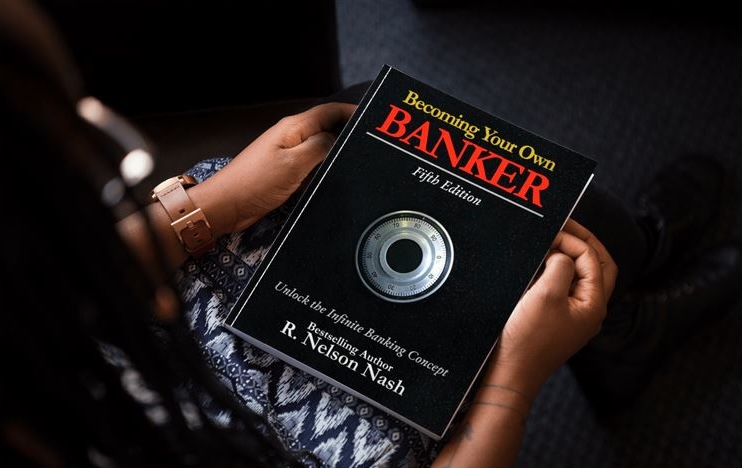The paid-up additions (PUA) rider, also known as PUAR is a unique feature of whole life insurance that plays a critical role in implementing the Infinite Banking Concept, developed by the late R. Nelson Nash.
In this article, we’ll explore what paid-up additions are and how they enhance the power of participating dividend-paying whole life insurance coverage, an often neglected and misunderstood financial tool for building and preserving wealth.
Definition of Paid Up Additions
A paid-up addition (PUA) is an additional layer of death benefit that is added to a policy. Each PUA can be purchased through additional deposits (Additional Deposit Options [ADO] or Excellerator Deposit Options [EDO]), dividends, or a combination of both.
PUAs are a cornerstone of the Infinite Banking Concept. They allow policyholders to accelerate cash value growth and enhance liquidity.
Each PUA also earns dividends when they’re declared by the insurer, and each PUA must accumulate its equivalent cash value by age 100 of the life insured. This additional growth is an advantage to the policy owner both while the life insured is alive and after the life insured’s death.
Mini-Whole Life Policies
Now, imagine paid-up additions as mini-paid-up life insurance policies; an enhancement that is stacked on top of your original participating whole life policy.
“Paid-up” means exactly that. Once it’s purchased, you never pay anything for it again. What each PUA does is accelerate your daily cash value growth as well as your total death benefit.
Common misconceptions about PUAs
One common misconception is that adding a paid-up additions (PUA) rider significantly increases the cost of a policy without providing immediate value. In reality, PUAs are designed to provide immediate cash value and accelerate long-term policy growth. Each PUA acts like a mini whole-life policy, fully paid up and compounding daily, helping your policy value grow uninterrupted over time.
Another misunderstanding is that PUAs are only for the wealthy. In truth, PUAs are highly flexible and can be funded through additional premiums, dividends, or both, making them accessible to a wide range of policyholders.
Does a PUA rider align with your financial strategy?
To ensure a PUA rider aligns with your financial strategy, it’s important to work with an advisor who specializes in the Infinite Banking Concept (IBC) to ensure the policy is structured correctly. Your financial advisor will look at your broader financial goals with you. Perhaps you want to accelerate cash value growth, increase death benefits, or create liquidity for future opportunities.
Before adding a PUA rider, ensure your cash flow can fund PUAs sustainably without overextending your budget. Your best option is to consult your financial advisor to help you design a whole life insurance policy to maximize PUA contributions while staying within Modified Endowment Contract (MEC) limits, preserving tax advantages, and uninterrupted compounding growth.
Ready to take control of your financial future?
Speak with an Ascendant Financial Advisor today and start building a strategy that protects your legacy.
Benefits of Paid-Up Additions
Paid-up additions build your wealth over time. They increase your total death benefit at no additional premium cost and are fully paid up, rapidly accelerating the daily growth of your total cash value in your policy. This means your death benefit and cash value grow simultaneously.
When you use paid-up additions to your whole life insurance policy, you can harness many powerful benefits, including:
- Taking advantage of compounding growth, without increasing your premiums
- Increasing immediate cash value (tax-free loans to yourself), without increasing your premiums
- Increasing your death benefit, without increasing your premiums
- Increasing in cash value and death benefit over the long term (rather than temporarily or during specific cases, such as hospitalization or serious illness).
- Adding extra cash as a non-forfeiture benefit and part of your permanent death benefit, and cash value
Alternatively, some people choose to use traditional investment vehicles (like RRSPs, TFSAs, stocks) to put their extra cash to build wealth. However, it’s not for everyone. Here is a comparison of PUAR vs traditional investments:
| Paid-up Additions | Traditional Investments | |
|---|---|---|
| Growth | Supports guaranteed and uninterrupted compounding | Dependent on market conditions |
| Risk | Lower | Varies depending on investment |
| Tax | Tax-deferred growth | Varies (eg, RRSP is tax-deferred, TFSA is tax-free, etc.) |
| Liquidity | Loan-based access with flexible repayment terms | Can easily sell many investments to access the cash value |
| Death Benefits | Tax-free death benefits | None |
PUAs are a popular choice for individuals who want a self-sustaining cash flow system (like the Infinite Banking Concept) to access cash for investments, emergencies, or other financial needs.
To determine if PUAs are right for you, your Ascendant Financial will look at three areas of your financial plan:
- Financial Goals: Do you want to accelerate cash value growth or increase the death benefit? If yes, PUAs may be a good option to optimize either (or both) of these outcomes.
- Cash Flow: Can you afford the additional payments required for PUAs without straining your budget? PUAs are flexible to use your own cash or policy dividends (or a combination of both) to boost your policy benefits.
- Policy Design: Is your base policy structured to maximize PUA contributions without violating MEC limits? A financial advisor can design your policy with this flexibility, so it’s there when you need it, ensuring your tax advantages are preserved.
Take control of your financial future.
Schedule a consultation with Ascendant Financial and ensure your financial choices align with your long-term goals — before it’s too late.
How Paid-Up Additions Work
Paid-up additions help you grow the cash value within your whole life insurance policy. For example, you can reinvest your earned dividends into your plan to purchase additional coverage. You can also make additional premium payments as PUA. These additional investments in your policy immediately add value to your death benefit and directly impact your cash value, increasing the liquidity in your policy. This will grow your borrowing power beyond your original earned cash value.
These reinvested dividends go towards future dividend earnings, compounding year after year throughout your policy. This creates a snowball effect: the longer you keep reinvesting your dividends, the greater the compounding impact.
Paid-up additions are optional, but are a core part of how you can build up your policy cash value faster (a key success component of the Infinite Banking Concept). You can purchase PUAs at any time during your policy, but the earlier you start, the more powerful the long-term compounding effect.
Paid Up Additions Rider
Typically, paid-up additions aren’t a default feature of your whole life insurance policy. However, it’s common for policyholders to include it as a rider (known as a Paid-Up Additions Rider or PUAR). When activated, this rider will automatically reinvest your dividends into your policy without increasing the premium you pay out of pocket.
A PUAR differs from other life insurance riders as it acts like a mini-standalone policy added to your base policy rather than adding temporary or conditional benefits to the policyholder and their beneficiaries. Here is how it compares to other common life insurance riders:
| Effects On | ||||
| Rider | Purpose | Premiums | Cash Value | Death Benefit |
| Paid Up Additions (PUA) | Buy more permanent coverage | No change | Grows | Grows |
| Term Rider | Buys temporary, low-cost death benefit | Yes | No | Yes (Temporary) |
| Accidental Death Benefit | Pays extra death benefit if death is an accident | Yes | No | Yes (only in accidental death) |
| Long-Term Care or Chronic Illness Rider | To access part of the death benefit early for healthcare costs | Yes | No | Yes (portion paid early) |
| Child/Spouse Rider | Add family member coverage | Yes | No | Yes (for covered members) |
How Do You Select Paid-Up Additions?
For starters, paid-up additions are a feature that exists in participating dividend-paying whole life insurance. As mentioned above, they can be purchased with additional deposits of premiums, dividends, or a combination of both. When dividends are used to purchase PUAs, there is no taxable event.
You can decide to use dividends to purchase PUAs or:
- Receive dividends in cash
- Use dividends to lower or offset your premium
- Payback policy loans
- Sit on deposit and earn interest
To implement the process of “Becoming Your Own Banker” (The Infinite Banking Concept), we often elect to have dividends purchase paid-up additions.
How are Paid-Up Additions used in infinite banking?
Because paid-up additions (PUAs) accelerate the growth of cash value within a whole life insurance policy, they are essential to the infinite banking method. PUAs are used in infinite banking in the following ways:
- PUAs give policyholders the option to pay more premiums toward fully paid insurance, which raises the policy’s cash value and death benefit.
- This offers a means of optimizing cash value accumulation while also overfunding the policy.
- Dividends from the additional paid-up insurance acquired through PUAs can be utilized to fund the acquisition of more paid-up additions.
- Over time, this compounding effect causes the monetary value to increase quickly.
Example of compound growth and benefits with PUAs
Let’s look at our client, Jim*. Jim is a 45-year old entrepreneur with a dividend-paying whole-life policy and a (PUA) rider. He started with a $10,000 annual base premium and allocated an additional $15,000 annually toward PUAs.
Over the first 15 years of his policy, here’s what he experienced:
- Cash value growth: Jim’s policy’s cash value grew from $0 to over $450,000 in 15 years. This growth was fueled by uninterrupted compounding and the reinvestment of dividends into additional PUAs.
- Death benefit increase: The initial death benefit of $500,000 rose to $1.2 million by year 15. Each PUA added a layer of fully paid-up insurance, increasing the total death benefit without requiring additional underwriting.
- Liquidity and flexibility: By year 10, Jim accessed $200,000 of his cash value through policy loans to fund a business expansion. The remaining cash value continued to grow uninterrupted, and the loans were repaid on his own schedule, maintaining Jim’s control and flexibility.
Jim’s Infinite Banking strategies provided significant financial growth and gave him peace of mind knowing their family was protected with an increasing death benefit.
*Name has been changed for privacy.
Discover The Process Of Becoming Your Own Banker!
Get access to our expert financial advisors and coaches who can help you implement permanent life insurance in your life.
First, watch our training to learn more about how you can transform your family’s future for generations.

Paid-Up Additions vs. Enhanced Options
In most cases, participating dividend-paying whole life policies feature a rider that allows you to purchase these paid-up additions. Different firms have different names. For instance, you’ll come across names such as:
- Paid-up additions rider (PUA/PUAR)
- Additional life insurance rider (ALIR)
Every earned dividend goes to acquire paid-up additions.
Compounded Interest
Albert Einstein is quoted as having said, “Compound interest is the eighth wonder of the world.” We like to say that “uninterrupted compounding is the ninth wonder of the world.” And that is what you achieve inside the policy…daily uninterrupted growth.
As you may already know, compound interest results in exponential growth. Those who understand it earn it. Those who don’t understand it, pay it.
Each paid-up addition increases cash value, which consequently earns dividends in our (PUA) case. These dividends result in additional paid-up additions, which in turn earn dividends themselves. That’s a compounding factor that cannot be beaten.

How Ascendant Financial Can Help You Implement Paid-Up Additions
As you’ve now discovered, paid-up additions in your whole life insurance plan are essential to building your wealth, to access today, and to build generational wealth for your beneficiaries. That’s why your financial advisors at Ascendant Financial want to ensure you understand how to use PUAs to your maximum benefit through the Infinite Banking Concept.
We recognize that your financial situation and needs are unique, and a one-size-fits-all approach may not be right for you. We’ll help you customize an approach to use PUAs to meet your goals, whether it’s paying off debts, dealing with emergency cash needs, or purchasing a new car, boat, or vacation home. Our goal is to help you fully understand the options and benefits of adding PUAs to your financial plan.
Learn more about how to use the Infinite Banking Concept and how PUAs can be a part of your financial future in our resources section.
If you’re ready to take the next step to become your own banker, watch our webinar first, then book a call for customized financial guidance.
Frequently Asked Questions
What Is the Meaning of Paid-up Insurance?
Paid-up insurance means your insurance is fully paid and requires no additional premiums. For example, paid-up additions to your whole life insurance policy remain active for the lifetime of your policy, and no additional premiums or interest payments are needed to maintain this extra value or coverage.
Are Paid-up Additions a Good Idea in Life Insurance?
Paid-up additions can be a good idea to immediately increase the cash value and death benefit of your policy without increasing your regular premiums. Also, the earlier you invest your paid-up additions, the longer you’ll benefit from the compounding growth of these deposits through the lifetime of your policy.
What Is the Difference Between Reduced Paid-up and Paid-up Additions?
Both reduced paid-up and paid-up additions are permanent and fully paid life insurance with no additional premium payments or interest payments required:
- Reduced paid-up additions help offset the cost of your premiums, thereby reducing or eliminating these payments. They keep your policy active but may reduce your coverage.
- Paid-up additions use your earned dividends to add extra money into your policy to increase the death benefit and policy cash value and earn dividends on themselves through compounding growth.
What Is the Paid-up Additions Option Used For?
Paid-up additions are used to grow your cash value (increase your policy borrowing power), increase your death benefits, access compounding growth, and build tax-sheltered wealth. It’s a core financial strategy used in the Infinite Banking System.
Popular Posts
- Understanding 401(k) Withdrawal Rules
 What do you have planned for your golden years? Having enough money to live comfortably and meet your goals for retirement often starts with your… Read more: Understanding 401(k) Withdrawal Rules
What do you have planned for your golden years? Having enough money to live comfortably and meet your goals for retirement often starts with your… Read more: Understanding 401(k) Withdrawal Rules - Is Infinite Banking Right for You? Pros, Cons, and Insights
 Are you ready to take the first step toward financial control and independence? Canadians from across the country are learning how the Infinite Banking Concept… Read more: Is Infinite Banking Right for You? Pros, Cons, and Insights
Are you ready to take the first step toward financial control and independence? Canadians from across the country are learning how the Infinite Banking Concept… Read more: Is Infinite Banking Right for You? Pros, Cons, and Insights
Share This Post
About the Author:
Jayson Lowe
As a seasoned coach, author, and podcast host, Jayson’s insights are rooted in real-world experience and a proven track record of turning challenges into opportunities. He’s not just a speaker—he’s a catalyst for change, inspiring audiences with actionable strategies and the motivation to implement them. Whether you’re looking to ignite your team’s potential, elevate your business strategies, or gain unparalleled insights into entrepreneurship, Jayson Lowe delivers with passion, clarity, and an undeniable impact.
Categories & Tags






